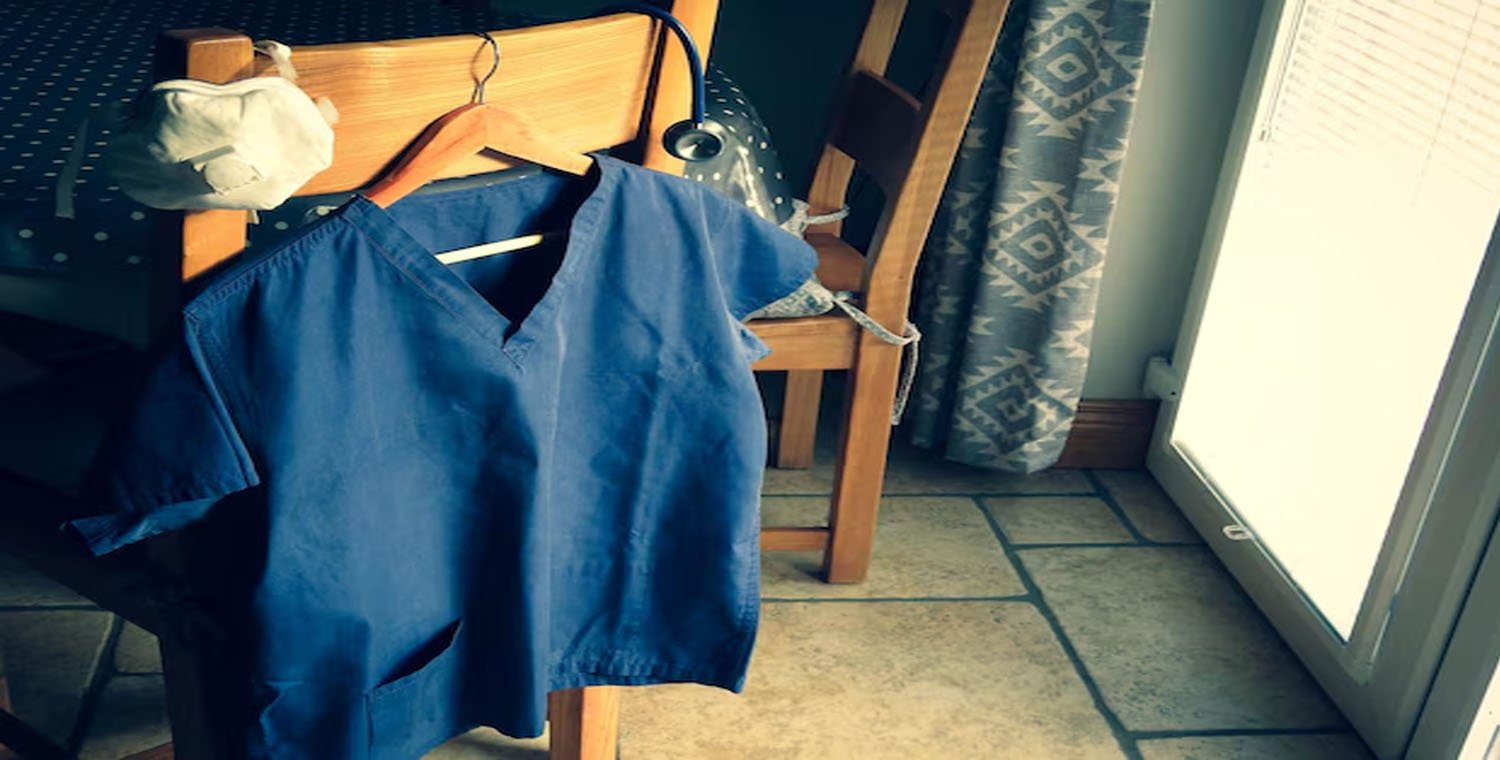When it comes to professional attire, one of the most practical and versatile garments is the blouse de travail. The term, which translates from French as “work blouse,” refers to a type of shirt typically worn in various work environments, from office settings to industrial workplaces. Whether for its comfort, style, or functionality, the blouse de travail is a staple of workwear in many industries. In this article, we will explore the origins, significance, and role of the blouse de travail in modern workplaces, as well as how it has evolved to meet the needs of today’s workers.
What Is a Blouse de Travail?
The blouse de travail is a versatile garment that combines both fashion and functionality. Typically characterized by its loose, comfortable fit and practical design, it serves as an ideal choice for a wide range of work environments, from formal office settings to more hands-on industries like healthcare or manual labor. The blouse is usually made of durable, breathable materials such as cotton, polyester, or blends that can withstand wear and tear while keeping the wearer cool and comfortable throughout the workday.
A blouse de travail is designed to be both stylish and functional, often featuring button-down fronts, collars, long or short sleeves, and sometimes pockets for added convenience. The design can vary widely depending on the specific needs of the profession, with more formal versions suited to office work and more casual or utilitarian versions used for manual labor or outdoor jobs.
The History of the Blouse de Travail
The concept of workwear has existed for centuries, and while the blouse de travail itself is a relatively modern garment, its origins can be traced back to the uniforms worn by workers throughout history. The Industrial Revolution in the 18th and 19th centuries marked a significant turning point in the development of work clothing. As people moved from agricultural labor to factory and office work, there was a need for garments that could withstand the demands of physical labor while maintaining a certain level of professionalism.
In Europe, particularly in France, the blouse de travail became popular during the early 20th century. At first, it was a practical garment worn by factory workers, tradespeople, and agricultural workers. However, its practicality and ease of movement made it a popular choice for other professions as well. Over time, the blouse de travail was incorporated into the uniforms of many industries, evolving to meet the needs of workers in a variety of fields.
In France, the blouse de travail became synonymous with the working class. It was also adopted by many women during the early 20th century as they entered the workforce in greater numbers. The blouse was practical for factory work, as it was loose enough to allow for easy movement, yet modest enough to fit into the social expectations of the time.
The Role of the Blouse de Travail in the Modern Workplace
Today, the blouse de travail is a popular choice of attire across many different industries. Its significance has evolved as the demands of the workforce have changed, but its basic function remains the same: to provide workers with comfort, practicality, and a sense of professionalism.
1. Office and Corporate Settings
In modern office environments, the blouse de travail has become a staple for both men and women. It offers a comfortable and professional alternative to more formal attire, such as suits or blazers. In many workplaces, the blouse de travail is worn as part of a business casual dress code, offering a stylish yet practical option for employees who want to look polished without sacrificing comfort.
Blouses made for office environments are typically crafted from soft, breathable fabrics like cotton or silk blends, and they often come in a variety of colors and patterns. The versatility of the blouse means that it can be paired with trousers, skirts, or even jeans, making it suitable for a variety of office settings.
2. Healthcare and Medical Professions
In healthcare settings, a blouse de travail plays an important role in ensuring both comfort and hygiene for workers. For nurses, doctors, and other medical professionals, the blouse serves as part of a uniform that meets the specific needs of the healthcare environment. Medical blouses are designed to be easy to clean, with fabrics that can withstand frequent washing and sanitizing. These blouses often feature practical details like front pockets for carrying pens, medical tools, or small instruments.
The design of medical work blouses is often simple and utilitarian, with solid colors or patterns to ensure they maintain a professional and clean appearance. While functional, the blouse de travail in this setting is also designed to offer comfort, as healthcare workers often spend long hours on their feet and need clothing that allows for ease of movement.
3. Manual Labor and Trade Work
The blouse de travail is also a popular choice in industries where workers are required to perform manual labor. In fields like construction, factory work, or agriculture, work blouses are designed for durability and comfort. These blouses are typically made of heavier, more robust fabrics like denim, canvas, or a cotton-polyester blend. These materials are chosen for their ability to withstand the wear and tear of physical labor, offering protection from dirt, debris, and other hazards.
In these settings, the blouse de travail is often designed with additional features like reinforced stitching, elbow patches, or longer sleeves to provide additional protection. Some versions may also have reflective strips or high-visibility features to ensure safety when working in low-light environments.
4. Fashion Industry and Retail Work
In the fashion industry and retail sectors, the blouse de travail has evolved to reflect the needs of modern workspaces while maintaining its roots in practicality. Retail workers, designers, and fashion professionals often wear blouses as part of their work attire. In these industries, the blouse serves as a balance between professionalism and style, often coming in trendy cuts, colors, and designs.
Blouses in the fashion and retail industries might feature unique details such as pleats, ruffles, or embroidery. These touches can make the blouse look more fashionable, while still maintaining the comfort and practicality needed for a busy workday.
Benefits of the Blouse de Travail
The blouse de travail offers a wide range of benefits for workers across various industries. Whether in a corporate office, a healthcare setting, or a construction site, the blouse provides practical advantages that enhance comfort and efficiency. Some of the key benefits include:
1. Comfort and Breathability
The primary advantage of the blouse de travail is its comfort. Made from breathable fabrics such as cotton or polyester blends, the blouse allows for air circulation, which is particularly important for workers who spend long hours on their feet. Whether in an office or a factory, the blouse provides the comfort needed to remain productive throughout the day.
2. Versatility and Style
The blouse de travail is a highly versatile garment. Its design allows it to be easily dressed up or down, making it suitable for a wide variety of professional settings. It can be worn with tailored pants or skirts for a more formal look or paired with jeans for a business-casual outfit. The blouse’s wide range of styles, colors, and fabrics makes it a go-to garment for many workers who want to look professional without sacrificing comfort.
3. Practicality
The blouse de travail is designed to be highly practical. With features such as front pockets, easy-to-iron fabrics, and durable stitching, it offers functionality that supports workers in performing their jobs efficiently. Whether it’s carrying tools in pockets or offering protection from the elements, the blouse can be customized to meet the needs of a specific work environment.
4. Durability and Protection
Work blouses are made to last. In environments like construction, healthcare, and manual labor, durability is crucial, and the blouse is built to withstand the rigors of daily use. Many work blouses are designed with reinforced stitching, heavy-duty buttons, and robust materials that resist wear and tear.
Choosing the Right Blouse de Travail
When selecting a blouse de travail, it’s essential to consider several factors that will influence its functionality and comfort. These include:
1. Fabric
Choosing the right fabric is key to ensuring comfort and durability. Cotton is a popular choice because of its softness and breathability, while synthetic blends like polyester and spandex offer moisture-wicking and stretch properties. For more industrial environments, durable materials like denim or canvas may be preferred.
2. Fit
The fit of the blouse is crucial for comfort and mobility. A loose or relaxed fit is ideal for manual labor settings, while a more tailored fit may be suitable for office environments. It’s important to select a blouse that allows for freedom of movement while maintaining a professional appearance.
3. Design and Features
The design of the blouse should match the specific needs of the job. Features such as front pockets, adjustable cuffs, and high-visibility elements can add functionality to the blouse, especially in trades or healthcare settings. For office work, consider blouses with subtle patterns or solid colors that fit within the dress code.
Conclusion
The blouse de travail is a timeless and versatile garment that serves as a cornerstone of workwear in various industries. Whether in an office, healthcare setting, or manual labor environment, this work blouse provides workers with comfort, durability, and style. Its evolution from a basic, practical garment to a modern-day work essential reflects the changing needs of the workforce and the importance of versatile, functional clothing. As work environments continue to evolve, the blouse de travail remains a reliable and stylish choice for professionals across the globe.




